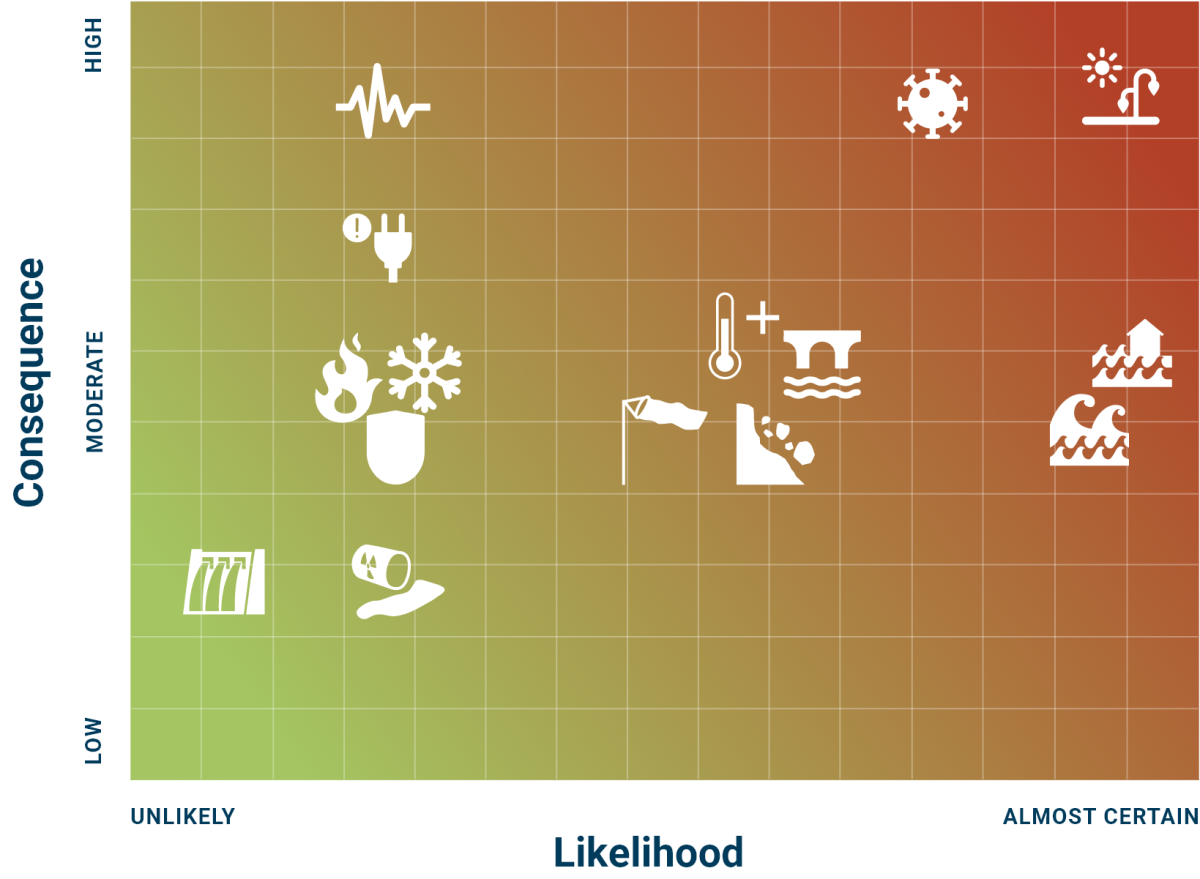Deficiency of precipitation over an extended period, resulting in a water shortage.
- Linked to hazards – heat, wildfire, food source & water service interruption.
In 2022, local authorities, governments and First Nations began a collaborative project to identify priority hazards and vulnerabilities in the Cowichan Region and inform risk reduction strategies. The goal of the project was to prioritize the top risks and build resiliency across all areas to reduce risk. Full details on the project and results are contained in the Cowichan 2024 All-hazards HRVA Report.
To better understand the risks in your area, use our Local Risk Tool to review your local risks and preparedness startegies by using your area or address.

Risk is the likelihood (unlikely or frequently) and impact (low impact, high impact to people, environment, economy etc.) of these hazards. For the 15 most relevant hazards in Cowichan, here is a general summary of the risk.
